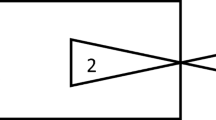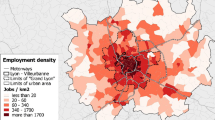Abstract
Models of spatial choice behaviour have been around in geography urban planning for decades to assess the feasibility of planning actions or to predict external (competition) effects on existing destinations. Although these models differ in terms of complexity and key concepts, they all have in common that spatial choice behaviour is predicted as a function of the attributes of the choice alternatives and distance or travel time separation only. None of these models do take into account that the attributes of choice alternatives and travel time may be highly non-stationary and that often the utility that people derive from visiting a particular location also depends on the choice behaviour of other individuals. Under these circumstances, individuals may exhibit strategic choice behaviour. That is, they will choose particular choice options taking into account their expected behaviour of others such as to maximize their own utility. The purpose of the proposed paper is to discuss possible models of strategic choice behaviour for these urban planning problems. Theory will be outlined and some critical issues in the application of such models to problems of spatial choice will be discussed.



Similar content being viewed by others
References
Arentze, T. A., Oppewal, H., & Timmermans, H. J. P. (2005). A multipurpose shopping trip model to assess retail agglomeration effects. Journal of Marketing Research, 42, 109–115.
Baxter, M., & Ewing, G. (1981). Models of recreational trip distribution. Regional Studies, 15, 327–344.
Camerer, C. F. (2003). Behavioral game theory: Experiments on strategic interaction. Princeton, NJ: Princeton University Press.
Camerer, C. F., & Ho, T.-H. (1999). Experience-weighted attraction learning in normal-form games. Econometrica, 67, 827–874.
Camerer, C. F., Ho, T.-H., & Chong, J. K. (2003). Models of thinking, learning and teaching in games. American Economic Review, 93(May), 192–195.
Crouch, G. I., & Louviere, J. J. (2000). A review of choice modeling research in tourism, hospitality and leisure. Tourism Analysis, 5, 97–104.
Dellaert, B., Arentze, T. A., Borgers, A. W. J., Timmermans, H. J. P., & Bierlaire, M. (1998). A conjoint-based multi-purpose multi-stop model of consumer shopping centre choice. Journal of Marketing Research. 35, 177–188.
Dellaert, B. G. C., Borgers, A. W. J., & Timmermans, H. J. P. (1997). Consumer activity pattern choice: Development and test of stage dependent conjoint choice experiments. Journal of Retailing and Consumer Services, 4, 25–38.
Fehr, E., & Fischbacher, U. (2002). Why social preference matter—the impact of non-selfish motive on competition, cooperation and incentives. The Economic Journal, 112(March), C1–C33.
Fehr, E., & Schmidt, K. M. (1999). A theory of fairness, competition and cooperation. The Quarterly Journal of Economics, August, 817–868.
Fotheringham, A. S. (1983). A new set of spatial interaction models: The theory of competing destinations. Environment and Planning A, 15, 15–36.
Fuddenberg, D., & Levine, D. (1998). The theory of learning in games. Boston, Mass.: MIT Press.
Fudenberg, D., & Tirole, J. (1991). Game theory. Cambridge, MA: MIT Press.
Goeree, J. K., & Holt, C.A. (1999). Stochastic game theory: For playing games, not just for doing theory. Proceedings of the National Academy of Science, 96, 10564–10567.
Goeree, J. K., & Holt, C. A. (2004). A theory of noisy introspection. Games and Economic Behavior, 46(February), 365–382.
Guy, C. M. (1987). Recent advances in spatial interaction modelling: An application to the forecasting of shopping travel. Environment and Planning A, 19, 173–186.
Kamakura, W. A., & Srivastava, R. K. (1984). Predicting choice shares under conditions of brand interdependence. Journal of Marketing Research, 21, 420–432.
McKelvey, R. D., & Palfrey, T. R. (1995). Quantal response equilibria for normal form games. Games and Economic Behavior, 10, 6–38.
McKelvey, R. D., & Palfrey, T. R. (1998). Quantal response equilibria for extensive-form games. Experimental Economics, 1, 9–41.
Richards, M., & Ben-Akiva, M. E. (1974). A simultaneous destination and mode choice model for shopping trips. Transportation 3, 343–356.
Sutton, R,. & Barto, A. (1998). Reinforcement learning: An introduction. Boston, Mass.: MIT Press.
Timmermans, H. J. P. (1993). Retail environments and spatial shopping behavior. In T. Garling & R. G. Golledge (Eds.), Behavior and environment: Psychological and geographical approaches (pp. 324–377). Oxford: Elsevier Science Publishers.
Timmermans, H. J. P., Arentze, T. A., & Ettema, D. F. (2003). Learning and adaptation behaviour: Empirical evidence and modelling issues. Proceedings ITS Conference, April 1–4, Eindhoven, The Netherlands.
Timmermans, H. J. P., Arentze, T. A., & Joh, C.-H. (2002). Analyzing space-time behavior: New approaches to old problems. Progress in Human Geography, 26, 175–190.
Wilson, A. G. (1988). Store and shopping-centre location and size: A review of British research and practice. In N. Wrigley (Ed), Store location store choice and market analysis (pp. 160–186). Routledge, London.
Acknowledgements
Qi Han’s research was funded by SOBU: a collaboration between Tilburg University and the Eindhoven University of Technology.
Author information
Authors and Affiliations
Corresponding author
Rights and permissions
About this article
Cite this article
Han, Q., Timmermans, H. Towards models of strategic spatial choice behaviour: theory and application issues. GeoJournal 67, 195–206 (2006). https://doi.org/10.1007/s10708-007-9045-4
Received:
Accepted:
Published:
Issue Date:
DOI: https://doi.org/10.1007/s10708-007-9045-4




